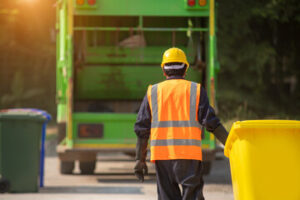Two billion people worldwide lack a dedicated Rubbish Collection Mandurah system. They produce far more waste and are at greater risk of environmental damage, odor, and health impacts.

Rubbish is non-putrescible solid waste, including wood, paper, cardboard, tin cans, glass, plastic, and yard trimmings. It can also include things like ashes, litter, and kitchen scraps. Recycling is the process of turning rubbish into new, valuable materials.
Despite the plethora of recycling symbols on everything from grocery bags to toys, not all materials are recyclable. In fact, most single-use plastics end up incinerated or as lingering waste in landfills, and it’s not necessarily your fault. The rules are complicated, and a lot of information is conflicting. It’s easy to get confused and fall short of your recycling goals – even when you have the best intentions.
In addition to educating people about what they can and cannot recycle, it’s also important to debunk common myths surrounding recycling. This can help people increase their recyclability IQ and reduce the amount of rubbish they produce.
Some common recycling mistakes include putting the wrong items in the recycling bin, not rinsing containers or not leaving on labels. The majority of these mistakes are caused by ignorance, but some can be avoided by ensuring that you’re doing it right the first time.
To ensure your rubbish is recycled properly, be sure to pay attention to size and shape. The most common recyclables are bottles, jars and tubs; these include products like shampoo and body lotion, as well as garden pots.
Paper is another common recyclable, and it includes office, copying, and writing paper; junk mail; and paper envelopes with or without windows. You can also recycle cardboard and kraft paper, as well as tissue and towels made from recycled material.
Glass is also recyclable, including drinking glasses and window glass panes. You can also recycle glass jars and bottles, as well as plastic food storage containers. You can also recycle ceramic dishes, such as plates and bowls.
There are some items that you should never put in your recycling bin, even if they’re made from recycled materials. These include wire hangers, which belong in the trash; and wrapping paper, which should be discarded as trash or taken to reuse stores.
Construction materials, such as wood, brick and plasterboard, aren’t recyclable through most curbside systems. However, some municipalities have household hazardous waste collection facilities that can accept these items. The same goes for paint, pesticides, fertilizer and their containers.
What happens to rubbish?
Many people assume that once they’ve thrown away something, it simply goes to the dump. However, the majority of rubbish is recycled and some of it is converted to energy.
Most councils provide weekly or fortnightly rubbish collection services, as well as separate collections for recycling waste. Once the rubbish is collected, it must be taken to a waste treatment facility where it will undergo processing. This can include landfill sites, waste incinerators, and recycling centers. The UK produces a large amount of rubbish each year, with households producing around 26 million tonnes of non-recyclable waste per annum. Most of this is taken to local recycling centers and waste incinerators, with the rest of it ending up in landfills.
Once at the recycling center, the rubbish is sorted into various categories using different methods depending on what it’s made of. For example, paper and card is separated using a picking station or trommel screens. The debris is then washed in soapy water to remove ink and glue. Metals are separated using magnets and eddy currents, with ferrous and non-ferrous metals being sorted separately. Plastics are graded using optical scanners, with glass and other materials being disposed of.
Then the rubbish is shredded or ground up to make it easier to handle. It is then screened to remove any large materials that may damage equipment and create safety hazards. This stage also helps to separate organic waste from inorganic matter. The organic material is then composted or anaerobically digested to produce methane gas, which can then be used to generate green electricity. The inorganic trash is then stored in landfills.
A modern landfill is designed to protect the surrounding environment and is regulated by strict environmental standards. It is often lined with clay or reinforced plastic, and it’s topped with a daily layer of dirt and earth products to prevent leachate (liquid draining from the bottom) from polluting the water table. The trash is then compacted into cells, with each cell filling up until it’s full and then capped with more soil.
The majority of household waste is recycled, with some being turned into energy and the rest sent to landfills. However, it is still necessary to reduce the amount of rubbish we produce, and there are many things that can be done to help, from reducing the amount of food we throw away, to using recycled plastics in construction projects.